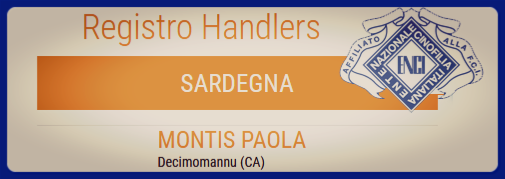To sum up, a cash book is a type of financial record used to keep track of all monetary transactions a firm makes, including money received and money disbursed. It is a crucial tool for controlling cash flow and making sure that every transaction is appropriately recorded. The right-hand side is the debit side which records all the receipts. The left-hand side is the credit side which records all the payment transactions.
- Receipts are shown on the left side and the right side is for payments.
- Alternatively the business can use the additional column of the two column cashbook ledger to operate as a bank journal.
- Read along and have a look at the different types of cash books.
- ✔ At the end, check whether the debit balance corresponds to the actual value of the cash count.
To be able to document your cash payments in accordance with regulations, you need a cash book. Here, we outline the most important fundamentals and explain how to correctly keep your cash book. A cash book is a chronological financial record of all the cash transactions of a business involving cash receipts and cash disbursements. It is updated and balanced on a real-time, continuous basis. Also known as a two column cash book, a double column cash book is the one which has a “Bank” column in addition to the regular “Cash” column. Just like the other type of books, it records receipts from cash and bank on the left side and payments – on the right side.
It’s also recommended to keep all of your records neatly organized in chronological order based on the tax year and according to the type of income or expense. The three column cashbook is sometimes referred to as the triple cashbook, treble cashbook or the 3 column cashbook. Man is to error and when noting down your transactions, it is understandable that at some point you may make a wrong entry.
In a smaller business that experiences less transactional volume related to cash, all cash transactions are recorded within a single cash book. Subsequently, the cash book balances what is cash book are compared against the bank statements and reconciled in case of discrepancies. This data is then utilised for the preparation of the company’s financial statements.
Description
You typically only see economy, business class, and first class on some long-haul international flights. On everything else, there’s economy class and one premium cabin, referred to as either business class or first class. If there’s only one premium cabin, then it’s just a matter of which term the airline uses. Business class and first class are premium cabins with larger seats, better food and drinks, and other perks. When available on the same flight, first class is the best option, followed by business class, and then economy.
How cash book accounting works
As the 2024 Grammys wrapped on Sunday night, Phoebe Bridgers had the most wins, with four trophies (three with her band, boygenius). SZA, boygenius, Killer Mike, Victoria Monét and songs from the “Barbie” soundtrack followed, with three wins apiece. Billie Eilish, Miley Cyrus and Taylor Swift had two, but Swift also broke a record, becoming the first artist to earn four album of the year prizes. Enter the amount coming in or paying out as well as an appropriate description in the receipt tab; this should be highlighted yellow so it stands out against all other entries. Petty cash refers to money that has been spent on small expenses (e.g., a sandwich for lunch), while general cash refers to larger sums that have not yet been allocated to specific items.
How to Set Up a Cash Book
All items of cash receipts are entered in the cash column of the receipt side; cash payments in the payment side. Discount allowed on the debit side and discount received on the credit side of the Cash Book [in the discount columns]. In modern times, banking habit has become so widespread and is so convenient and safe that a large number of payments of big concerns are made and received through cheques. In such cases, the Cash Book with bank column in addition to the cash and discount columns is found convenient. In such a Cash Book, cash columns and bank columns represent cash a/c and bank a/c respectively.
Depending on how the transactions are recorded, a cash book can be either a debit or credit book. Businesses may use a cash book to track their income and expenses. Cash books come in a single column and can have an additional column.
Under the double-column cash book, there are two columns to record amounts. One is used for recording cash transactions and another one is used for recording bank transactions. Thus, in the double-column cash book, cash and bank accounts are prepared together. The transactions that affect both cash and bank accounts are known as contra entries. The closing balance of the bank column is regularly cross-checked with the bank’s closing balance. The company regularly prepares bank reconciliation statements.
Finally, in the usual manner, the receipt of cash is recorded in the cash column. If the bank balance is a credit balance (overdraft), then it is entered on the credit side in the bank column. Ageras is an international financial marketplace for accounting, bookkeeping and tax preparation services. User reviews of professionals are based solely on objective criteria.
A folio number is a unique number assigned to a specific ledger account mentioned in the description column for easy reference and cross-verification. Maintaining detailed records of your firm’s cash transactions in a cash book is extremely vital. In addition to serving as an important accounting record, it helps companies in keeping track of their financial position at all times. It also provides updated and relevant data while formulating budgets, making forecasts, and allocating resources, thus, ensuring efficient financial management. Also known as a simple cash book or a one column cash book, a single column cash book has one relevant column on each side which shows the simple “receipts” and “payments” of cash. Receipts are shown on the left side and the right side is for payments.
In contrast to utilising a cash book template, companies today prefer maintaining records with excel sheets or accounting software. Consequently, this cash book has given rise to the concept of contra entries, commonly denoted as ‘C’ in the cash book. Contra entries are made when transactions occur between a cash and a bank account, for instance, cash withdrawn from a bank account for business investment. A cash book is a crucial document for the bank reconciliation process. If there is a discrepancy between your bank balance and the closing balance in your company ledger, you can refer to your cash book and check whether you’ve made any errors.
The total of receipts should always be greater than the payments. The difference is mentioned on the credit side as “Balance c/d”. The balance on the debit side is then written with “To Balance b/d”, this is the beginning cash balance of a business for the next period. Cash book is a special type of book that is only concerned with the recording of cash transactions of an organisation. It performs the dual role of both journal and a ledger for all the cash transactions taking place in a business organisation. It acts as a journal or book of prime entry because all cash transactions are recorded in it as and when they take place.
Benefits of electronics cash book accounting
Just upload your form 16, claim your deductions and get your acknowledgment number online. You can efile income tax return on your income from salary, house property, capital gains, business & profession and income from other sources. Further you can also file TDS returns, generate Form-16, use our Tax Calculator https://personal-accounting.org/ software, claim HRA, check refund status and generate rent receipts for Income Tax Filing. On LII you can find a full breakdown of all balance sheet requirements for the U.S. and which persons they apply to. For further information on balance sheets, refer to our article on the basics of double-entry accounting.
Another pitfall of recording cash transactions in your journal is that it does not indicate the exact amount of money you have at the end of the day, week or other accounting periods. Keeping records is key to maintaining the financial health and well-being of any business or household. Using a cash book is a great way to help manage and account for cash-related transactions, including receipts and payments.


